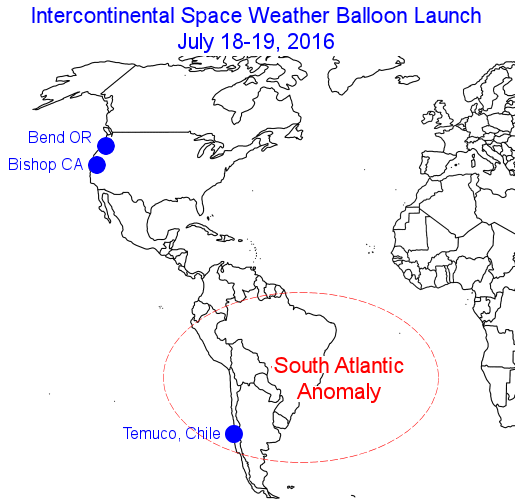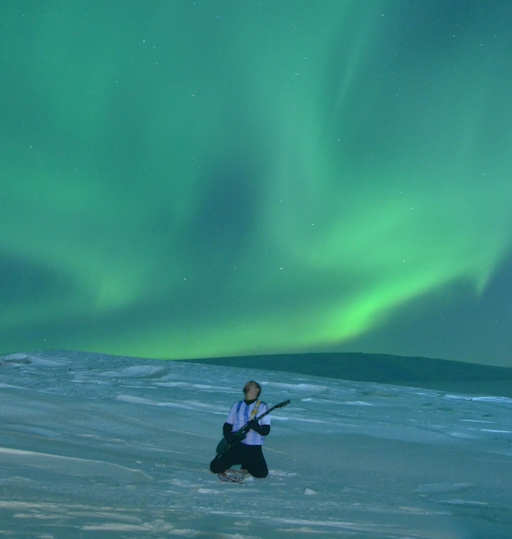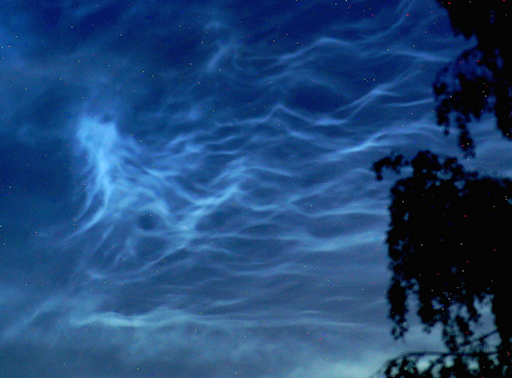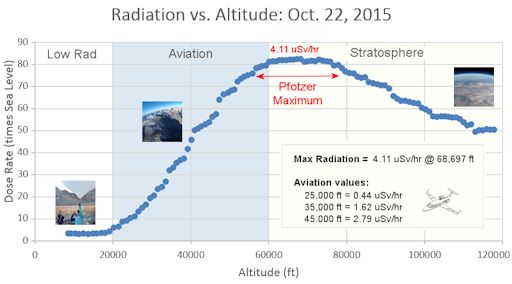It's waiting for you: The most successful Aurora Photo Tour on Earth! 100% success rate 4 years in a row and winner of the TripAdvisor Certificate of Excellence Award. Join LapplandMedia's aurora tours in Abisko, Swedish Lapland! | | | NO SOLAR FLARES: Despite an uptick in the sunspot number, solar activity remains very low. The sun's X-ray output is flatlining as no sunspot seems capable of producing an explosion. NOAA forecasters say the chance of a strong flare today is no more than 1%. Solar flare alerts: text or voice BALLOONING INTO THE SOUTH ATLANTIC ANOMALY: On July 18th, Spaceweather.com and the students of Earth to Sky Calculus will attempt a simultaneous launch of 3 space weather balloons from 2 continents. The goal of the flight is to measure the amount of atmospheric radiation in the South Atlantic Anomaly over Chile compared to similar latitudes in the USA. This has never been done before, and the results should be interesting. 
Students working with Spaceweather.com have been launching balloons into the stratosphere over California since May 2014. This triple balloon flight will expand upon those measurements to cover more than 70 degrees of latitude and 6,000 miles of geographical distance. Of special interest is the South Atlantic Anomaly, a dip in the Earth's magnetic field which allows cosmic rays, and charged particles to reach lower into the atmosphere. We will be flying a balloon equipped with X-ray/gamma-ray sensors into the outskirts of the Anomaly from Temuco, Chile, measuring dose rates all the way from sea level to the stratosphere. Comparisons will be made with identical measurements far from the Anomaly in California and Oregon. Stay tuned! Realtime Space Weather Photo Gallery GEOMAGNETIC UNREST: For the 3rd day in a row, Earth is moving through a fast-moving stream of solar wind. Resulting G1-class geomagnetic storms have ignited some fantastic auroras over Antarctica. Yesterday at Argentina's Belgrano II base, researcher Saiquita Gabriel grabbed his guitar and joined the show: 
"It was a magical experience," says Gabriel. "I was so happy!" The show's not over. Earth could be inside this broad stream of solar wind for as much as two more days. Dark winter skies in Antarctica favor continued visibility of southern lights--with an Argentine soundtrack, of course. Aurora alerts: text or voice Realtime Aurora Photo Gallery ELECTRIC BLUE GRAVITY WAVES: As July unfolds, sky watchers are seeing noctilucent clouds almost every night over northern Europe. Created by summertime water vapor freezing around meteor smoke in the upper atmosphere, the electric-blue forms can be mesmerizing. Consider this report from photographer Inta Nuke of Carnikava, Latvia: "July 10th was heavenly. I've never seen such bright, unusual shapes--almost mysterious." Almost. Scroll past Nuke's photo for an explanation: 
The luminous swirls in Nuke's picture are a sign of gravity waves. Gravity waves are, essentially, waves of pressure and temperature kick-started in the lower atmosphere by, e.g., powerful storm systems. Gravity does not vary inside the waves; they get their name from the fact that gravity acts as a restoring force that tries to restore equilibrium to up-and-down moving air. Gravity waves can propagate all the way from Earth's surface up to the mesosphere, where they imprint themselves on the the forms of noctilucent clouds.
Often, gravity waves break in the noctilucent zone, dumping their energy and momentum there. Laser radar studies of noctilucent wave structures can trace this energy and tell researchers a great deal about upper atmospheric circulation. Realtime Noctilucent Cloud Photo Gallery
Realtime Sprite Photo Gallery
Every night, a network of NASA all-sky cameras scans the skies above the United States for meteoritic fireballs. Automated software maintained by NASA's Meteoroid Environment Office calculates their orbits, velocity, penetration depth in Earth's atmosphere and many other characteristics. Daily results are presented here on Spaceweather.com. On Jul. 13, 2016, the network reported 19 fireballs.
(16 sporadics, 1 psi Cassiopeid, 1 Microscorpiid, 1 July Pegasid)  In this diagram of the inner solar system, all of the fireball orbits intersect at a single point--Earth. The orbits are color-coded by velocity, from slow (red) to fast (blue). [Larger image] [movies] Potentially Hazardous Asteroids ( PHAs) are space rocks larger than approximately 100m that can come closer to Earth than 0.05 AU. None of the known PHAs is on a collision course with our planet, although astronomers are finding new ones all the time. On July 13, 2016 there were potentially hazardous asteroids. Notes: LD means "Lunar Distance." 1 LD = 384,401 km, the distance between Earth and the Moon. 1 LD also equals 0.00256 AU. MAG is the visual magnitude of the asteroid on the date of closest approach. | | Cosmic Rays in the Atmosphere | | Situation Report -- Oct. 30, 2015 | Stratospheric Radiation (+37o N) | | Cosmic ray levels are elevated (+6.1% above the Space Age median). The trend is flat. Cosmic ray levels have increased +0% in the past month. | | Sept. 06: 4.14 uSv/hr (414 uRad/hr) | | Sept. 12: 4.09 uSv/hr (409 uRad/hr) | | Sept. 23: 4.12 uSv/hr (412 uRad/hr) | | Sept. 25: 4.16 uSv/hr (416 uRad/hr) | | Sept. 27: 4.13 uSv/hr (413 uRad/hr) | | Oct. 11: 4.02 uSv/hr (402 uRad/hr) | | Oct. 22: 4.11 uSv/hr (411 uRad/hr) | These measurements are based on regular space weather balloon flights: learn more. Approximately once a week, Spaceweather.com and the students of Earth to Sky Calculus fly "space weather balloons" to the stratosphere over California. These balloons are equipped with radiation sensors that detect cosmic rays, a surprisingly "down to Earth" form of space weather. Cosmic rays can seed clouds, trigger lightning, and penetrate commercial airplanes. Our measurements show that someone flying back and forth across the continental USA, just once, can absorb as much ionizing radiation as 2 to 5 dental X-rays. For example, here is the data from a flight on Oct. 22, 2015: 
Radiation levels peak at the entrance to the stratosphere in a broad region called the "Pfotzer Maximum." This peak is named after physicist George Pfotzer who discovered it using balloons and Geiger tubes in the 1930s. Radiation levels there are more than 80x sea level. Note that the bottom of the Pfotzer Maximim is near 55,000 ft. This means that some high-flying aircraft are not far from the zone of maximum radiation. Indeed, according to the Oct 22th measurements, a plane flying at 45,000 feet is exposed to 2.79 uSv/hr. At that rate, a passenger would absorb about one dental X-ray's worth of radiation in about 5 hours. The radiation sensors onboard our helium balloons detect X-rays and gamma-rays in the energy range 10 keV to 20 MeV. These energies span the range of medical X-ray machines and airport security scanners. | | The official U.S. government space weather bureau | | | The first place to look for information about sundogs, pillars, rainbows and related phenomena. | | | Researchers call it a "Hubble for the sun." SDO is the most advanced solar observatory ever. | | | 3D views of the sun from NASA's Solar and Terrestrial Relations Observatory | | | Realtime and archival images of the Sun from SOHO. | | | from the NOAA Space Environment Center | | | the underlying science of space weather |  | Tobi -- Proud Supporter of Space Education! |  | Claim your tax refund with this UK tax rebate company and get back your overpaid tax. |  | Enjoy this fabulous range of leather sofas from a leader in the UK sofa manufacturer industry.. | | 
